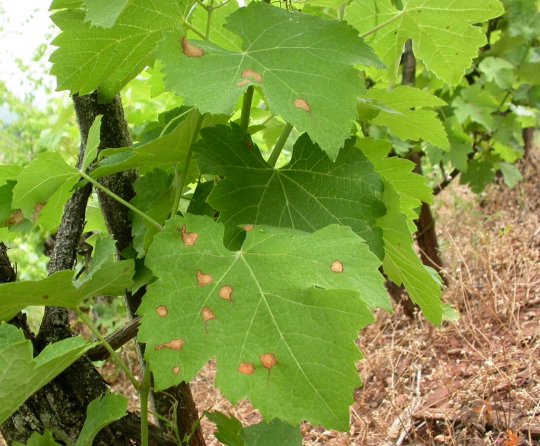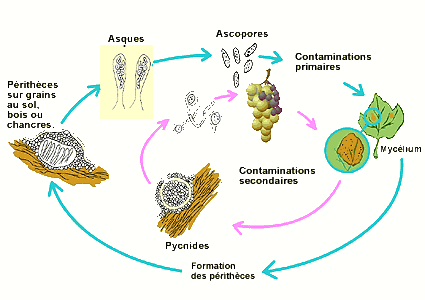What are the symptoms of Black Rot on leaves?
Black Rot (Guignardia bidwellii) causes small regular spots (a few millimetres in diameter), reddish-brown on both sides with a dark brown border. Three to four days later, small black pustules, called pycnidia, appear on the upper surface and concentrically over the spot.
Developing leaves are more vulnerable than mature leaves that become resistant. The characteristic symptoms are referred to as "shotgun". Symptoms can also be seen on berries as illustrated below.



